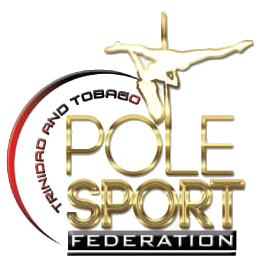Our Vision
To assist the International Pole Sports Federation in getting Pole Sports recognised, internationally successful and represented at the World Games and eventually at the Olympic and Paralympic Games in all aspects of Pole Sports, with recognition for national and International Medallists and world record holders.
Our Mission
To enable and inspire all coaches, judges, athletes and enthusiasts to enjoy pole sports, by providing opportunities for individuals to engage, develop and realise their potential within all aspects of the sport, regardless of their age, background, ability or disability.
We seek to achieve our Vision and Mission through the following key objectives:
- Raise awareness and educate the public about the full range of Pole activities, leading to increased recognition, sponsorship, funding, access and participants for the sport.
- Develop strong internal and external partnerships, at all levels, in order to provide opportunities, structures and support for Pole Sports and the wider pole community locally.
- Develop an extensive pole sports structure and community to support athletes for careers as they transition out of competition. The TTPSF seeks to build a sustainable long term future for Pole Sports athletes.
- Promote a cohesive, ethical, inclusive and valued coaching system where skilled coaches support pole athletes at all stages of their development.
- Maintain an Anti-Doping Programme in accordance with the World Anti-Doping Agency (WADA) Code, the gold standard in fairness, equality, and integrity across all sports and all countries.
- Fairly and comprehensively govern and regulate Pole Sports locally.
Our History
The Trinidad and Tobago Pole Sport Federation was co-founded on March 5, 2020 by Ms Maria Joseph and Mr. Mitch Mohess, with integral input from Mr. Sheldon Guerra. The Federation was formed with the intention of uniting and formalising members of the Pole community including: athletes, coaches, judges and enthusiasts, into a single nationally recognised body in order to grow and develop the sport locally.
Upon the acquisition of the Federation’s name approval, on February 14, 2020, local graphic artist and a member of the Pole community, Ms. Samantha Rogers was tasked with designing the Federation’s logo while local web-page developer Mr. Mark Houlder was commissioned to design the Federation’s website.
Unbeknownst to the Federation’s founders, Ms. Kate Ng-See-Quan had also been in contact with the IPSF and was also working toward the formation of a local Pole Sport Federation. Having been introduced to each other on February 17, 2020, Ms. Joseph and Ms. Ng-See-Quan agreed to join forces and undertake the Federation’s operations together. With Ms. Joseph focused on the administrative operations of the Federation and Ms. Ng-See-Quan focused on the technical aspect of the Sport itself, the collaboration was pre-destined to be effective, successful and an amazing start to the local Pole Sport revolution.
The concept of Pole as a sport dates back to 2006, after pole became a popular fitness form in 2000 and pole competitions started gaining popularity. Competitions had little or no scoring or judging criteria, no way of consistently awarding points to those athlete that were technically and artistically superior, and rules consisted of very little in the way of guidance on what the judges were and were and were not looking for.
In 2006, a survey was carried out by Katie Coates to see how the pole community felt about Pole Sports becoming an Olympic Sport; over 10,000 voted in favour. In 2008, Tim Trautman of the USA began working with Katie on the International Pole Sports Federation, and the term Pole Sports was created transforming Pole forever from a physical activity performed socially and for fitness, into to an international sport and competition.
Soon, national federations began forming and competitive teams were organised. The 1st World Pole Sports Championships took place in 2012 with just 43 athletes from 14 countries; only 5 were men. 2013 saw the launch of the Youth category with just 7 athletes.
Just 5 years later, in 2017, there was an increase of over 80% in participation in the youth category; in total, 229 athletes from 36 countries competed on the World Pole Sports stage.
By mid-2011, an estimated 95 percent of all Pole Sports Athletes were girls and women; as a consequence the feedback from the IOC has been to improve the balance in genders, which the IPSF have pushed to do. In 2017, male junior and novice categories were opened for the first time, which helped to increase male participation by more than 70%.
In 2014 the IPSF contacted GAISF regarding the application process, and the road to recognition began. The IPSF began aligning itself to the GAISF and IOC criteria, expanding national federations to 25 with a further 12 in the application process.
Development of the sport over the years:
- 2009 – Formation of the IPSF
- 2012 – First World Championships
- 2013 – Introduction of a youth programme
- 2014 – First contact with SportAccord (now GAISF)
- 2014 – Anti-Doping programme introduced
- 2015 – First application to SportAccord (now GAISF)
- 2016 – Approved as a WADA signatory
- 2016 – Applied to the IOC for membership
- 2017 – Signed a trilateral agreement with the FIG and GAISF to allow the IPSF membership of GAISF
- 2017 – Observer Status granted by GAISF
